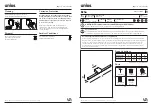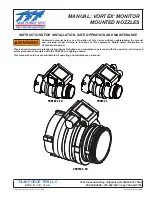
Operation
15
Controls
Become familiar with all the controls (Fig. 7) before
you start the engine and operate the traction unit.
m–4663
5
9
6
7
10
2
1
3
11
8
4
Figure 7
1.
Traction control
2.
Loader arm/attachment tilt
lever
3.
Auxiliary hydraulics lever
4.
Reference bar
5.
Throttle lever
6.
Choke knob
7.
Fuel gauge
8.
Hydraulic oil temperature
light
9.
Hour meter
10. Key switch
11. Parking brake lever
Key Switch
The key switch, used to start and stop the engine, has
three positions: off, run, and start.
To start the engine, rotate the key to the start position.
Release the key when engine starts and it will move
automatically to the run position.
To stop the engine, rotate the key to the off position.
Throttle Lever
Move the control forward to increase the engine
speed and rearward to decrease speed.
Choke Knob
Before starting a cold engine, pull the choke knob
out. After the engine starts, regulate the choke to
keep the engine running smoothly. As soon as
possible, push the choke knob in as far as possible. A
warm engine requires little or no choking.
Reference Bar
When driving the traction unit, use the reference bar
as a handle and a leverage point for controlling the
traction control and the auxiliary hydraulics lever. To
ensure smooth, controlled operation, do not take both
hands off of the reference bar while operating the
traction unit.
Traction Control
To move forward, move the traction control forward.
To move rearward, move the traction control rearward
(Fig. 8).
To turn, rotate the traction control in the desired
direction (Fig. 8).
The farther you move the traction control in any
direction, the faster the traction unit will move in that
direction.
To stop, release the traction control.
m–4664
Figure 8
Loader Arm/Attachment Tilt Lever
To tilt the attachment forward, slowly move the lever
to the right (Fig. 9).
Summary of Contents for Dingo TX 22306
Page 7: ...Safety 5 Slope Chart...
















































